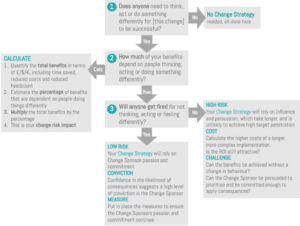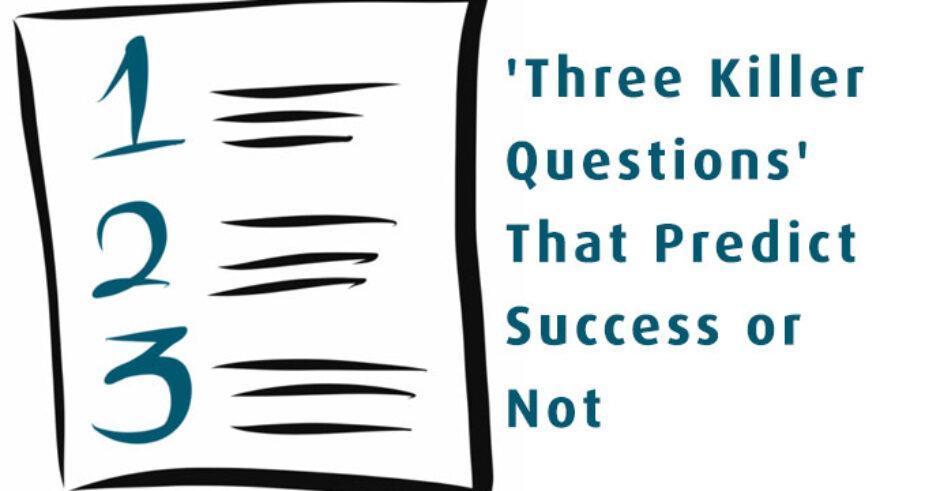Imagine a world where you can diagnose the likelihood of a change being successful in minutes. This is what the Three Questions gives you.
The power of the questions come from the self-awareness they cause in the stakeholders, sponsors and team. They change the conversation to focus on the benefits, risk and to raise awareness of the change strategies for success.
The questions are the start of the conversation and give you the opportunity to enquire further.
In 100 words
What: The Three Questions quickly get to the heart of whether the change will be successful or not, and the scale of risk.
Why: Humans are predictable, which allows us to predict the likely organisational behaviour.
When: From the earliest point in the project, these are the first questions to ask when you scope the project.
How:
- Ask the questions.
- Listen to the answers
- Coach the stakeholders on the implications of the answers
- Update your change strategy
Bonus: The Three Questions give you the basis for a different conversation with stakeholders, sponsors and the project team.
Download the guide and template →
The Three Questions
Question One: Does anyone need to think, act or do something differently for [this change] to be successful?
Why: This question establishes whether behavioural change is required to get to the outcomes. If it is, then the human factor cannot be ignored.
How it works: It causes the answerer to think through the implications of the change, rather than the product that is being created.
So What: Changes reliant on a behavioural change need a change strategy.
Question Two: How much of your benefits depend on people thinking, acting or doing something differently?
Why: Having established that behavioural change is required, this question shifts the focus to the benefits and connects the two.
How it works: Framing the change in the context of the benefit statements makes the impact of the change feel real. The ‘how much’ requires the answerer to consider the source of the benefits and to quantify them. Once that number has been verbalised, it becomes firm in the answerers mind. 80% of £10m is £8m. The scale, and importance of the behavioural change has been established.
So What: A change that has a high impact on the benefits, should have a high impact change strategy with outcomes that are monitored and managed closely.
Question Three: Will anyone get fired for not thinking, acting or feeling differently?
Why: If there are no consequences the likelihood of the change taking place is reduced significantly, especially in an environment where there are competing priorities.
How it works: The question is deliberately provocative, to disrupt the enthusiasm and excitement that exists within the design team.
This question prompts stakeholders and sponsors to consider the importance of the change to the organisation in the context of other priorities. It raises awareness of the influence structure within the organisation as they think through who would apply the consequences.
So What: Changes without consequences are optional and depend on the willingness of your targets to do something differently of their own choice.
Without consequences it will take longer to influence and persuade targets, adding to the costs and effort and making it harder to guarantee the penetration of the change through the organisation and with that, the delivery of the benefits.
In Pictures
This flow chart walks through the questions

Download the guide and template →


